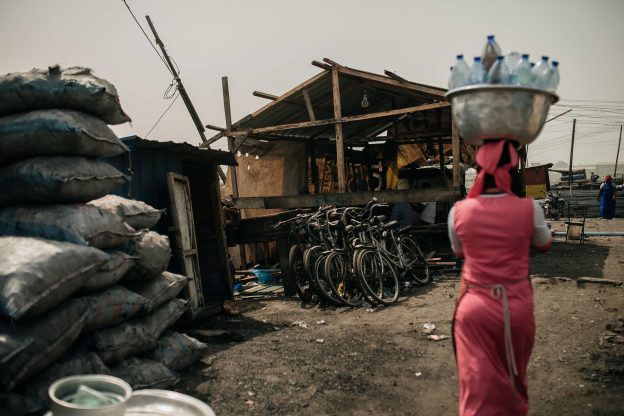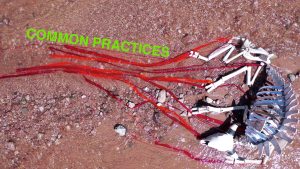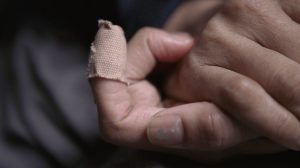with photography by
NANA KWADWO AGYEI ADDO
Salvage is a historical term, one that is still in use in my country, the Philippines. It is a term to mean, particularly, a style of killing or summary execution, or in which the bodies of victims are thrown in remote fields, empty spaces, and abandoned lots. This was a term that first emerged during the years of dictatorship by former tyrant Ferdinand Marcos, 1966–1986. The most well known attribution of the word “salvage” is from a newspaper column in the Manila Times, “Carabeef Lengua” by Pete Lacaba, where he mentioned “salvage” to refer to extrajudicial killings during the period of martial law, beginning in 1972. In his long tenure as head of the state, Marcos killed most of his opposition, many of whom were activists and students. Some of the bodies were left mangled and in such a state that the expression “salvage” is still used today to mean a particularly gruesome murder, whether by police or others, that bears resemblance to those types of killings in the past.
The most famous case of salvage in Philippine history happened when one of Marcos’ inner circle and editor of a pro-Marcos newspaper jumped ship and published a book that detailed the corruption and cronyism of the then-current Philippine government administration.
The Conjugal Dictatorship by Primitivo Mijares outlined the massive scale in which the Marcoses enriched themselves and their people. A few months later, the former Marcos crony-turned-whistleblower went missing and his remains were never found. We don’t know what ultimately happened to him but we do know of the tragic fate that befell his son because of the mutilated parts the authorities have uncovered.
But the past has returned once again in the Philippines, since another brutish man, the current president Rodrigo Duterte, has deemed life, especially those of the poor in these lands, to be inconsequential. Gunned down by the police, these deaths are declared righteous in the face of the war on drugs even though, for many victims, the only crimes committed were going out past curfew and bringing a meal of fish and rice to their families.
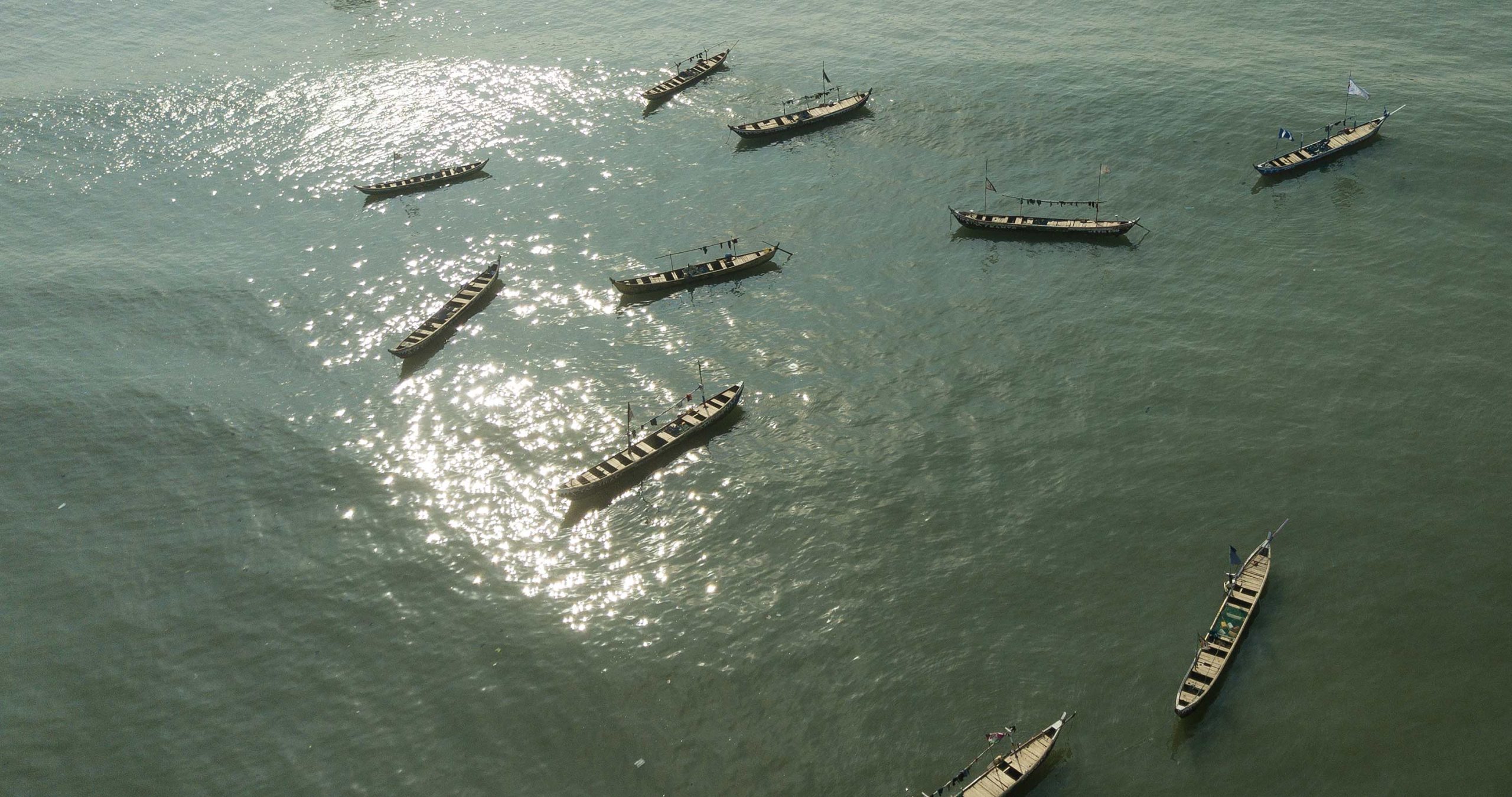
If the Sea Had a Parking Lot
These killings are not precisely “salvage” killings in the sense of its former usage. Unlike Marcos-era killings, these are done in broad daylight. Police are sanctioned, pardoned, and outright ordered by the state to carry out the violence. Does their impunity come from the fact that most if not all of the victims are poor? There have been activists gunned down, and lawyers have gone missing—types of killings similar to those in Marcos’s regime—but, there has not been widespread resurgence of the term. To “salvage” is typically a more secretive affair. These killings, ordered by Duterte’s administration, are ostensibly justified in the context of the war on drugs. Typically, “salvage” is used when a dictator or ruthless politician wants someone dead incognito. With the former “salvage,” political opponents are eliminated and the dictator has eliminated obstacles to his position of power.
Elections are around the corner and children of tyrants are running for office. I fear that the time of “salvage” is coming again, with recent killings signaling the potential for a return of more widespread carnage. More and more people are disappearing into the shadows.
As a child living in Cebu in the ’90s, whenever I heard the term “salvage,” it almost always referred to a kind of killing that was more brutal or even savage than a normal homicide. Even today, “salvage” conjures up images of mutilated, slain bodies of people who were dumped in remote fields and grasses, places where it would take time to find them.
I remember an adult telling me not to go outside so much, or at night, or to places with few other people present. Around my neighborhood, adults would tell you to not go near any empty lots in fear of getting “salvaged.” And today too, I still hear about salvage victims from time to time: gruesome stories of unfortunate, missing people, or those who were killed, their bodies dumped in grassy areas, or remote empty lots. In the Philippines, killings are commonplace: you have to watch your back, especially if you are a journalist whose work involves reporting wealthy and powerful people and their business.
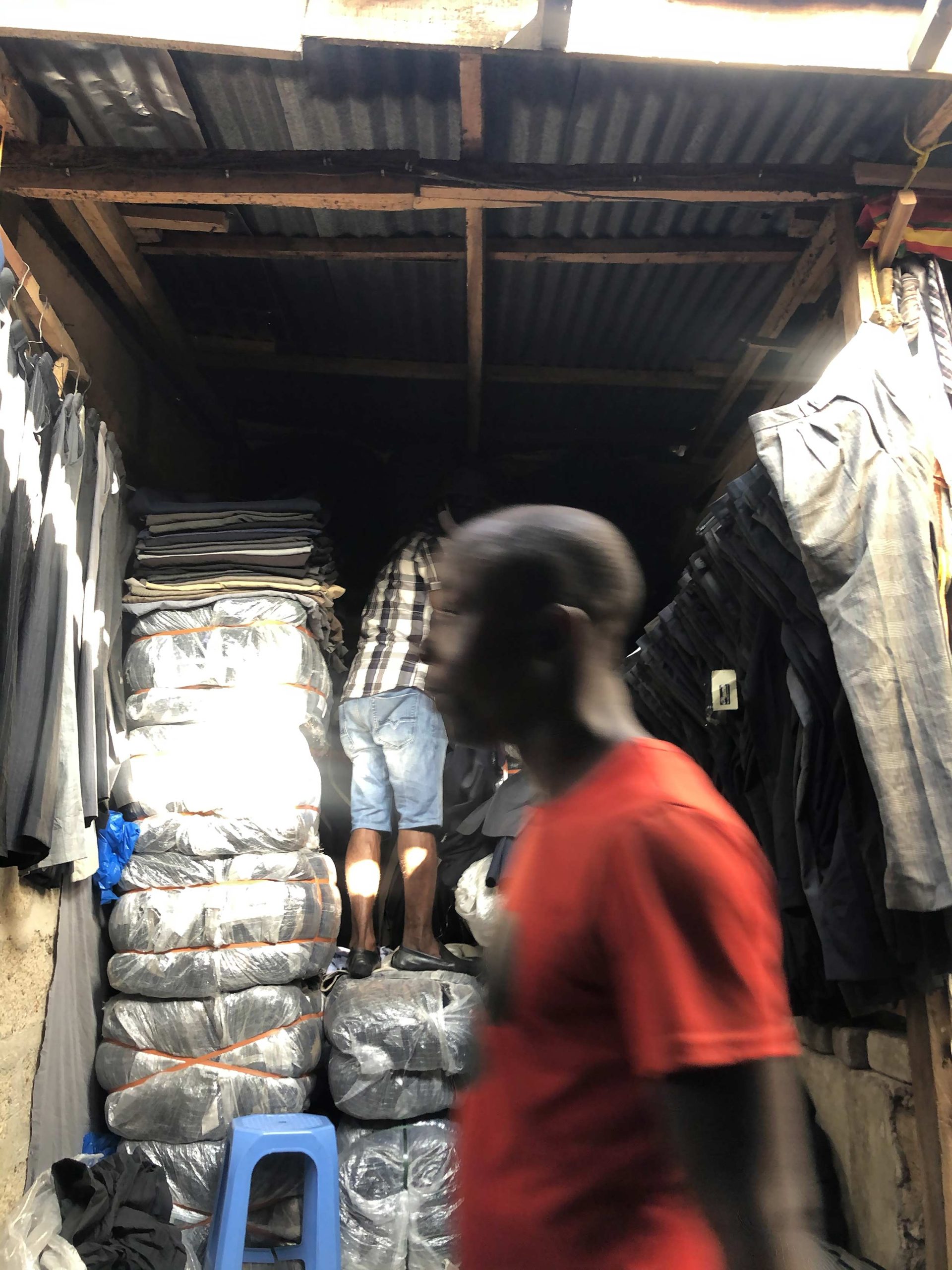
Dead White Men’s Clothes
I was not yet born during martial law and so my experience of the word “salvage” was one of rumors, gossip, and headlines of people’s bodies in remote spaces. Salvage may have originated during martial law, specifically referring to governmental killing of political opponents, activists, or the poor. But since then, it has evolved to mean a kind of killing that is particularly gruesome, with remains dumped in liminal spaces between the public and the private or the urban and the rural. Salvage can even mean people who just disappear and who most likely have been killed and whose bodies are never to be found again.
The Philippines have two national languages, Tagalog and English. English in the Philippines has many loanwords from Spanish, the Philippines’ European colonizer for three hundred years. The Anglicized Spanish loanwords can sometimes result in cognates, words that have a similar form or sound, but have different meanings in different languages. Salvar and salvaje might have been mixed in the lexical process between languages, and thus in the Philippines as a whole.
In his Manila Times column in 1995, Lacaba shared a bit on the theories of the possible lexical processes that might have occurred to the origin of the word “salvage” having its local context to wildly differ from its English counterpart. “Salvage,” coming from the Spanish word salvar, which means to save or to rescue. There is also a connection to the Tagalog word salbahe, which means wicked, and it’s the likely Spanish origin of salvaje, which means savage or wild.
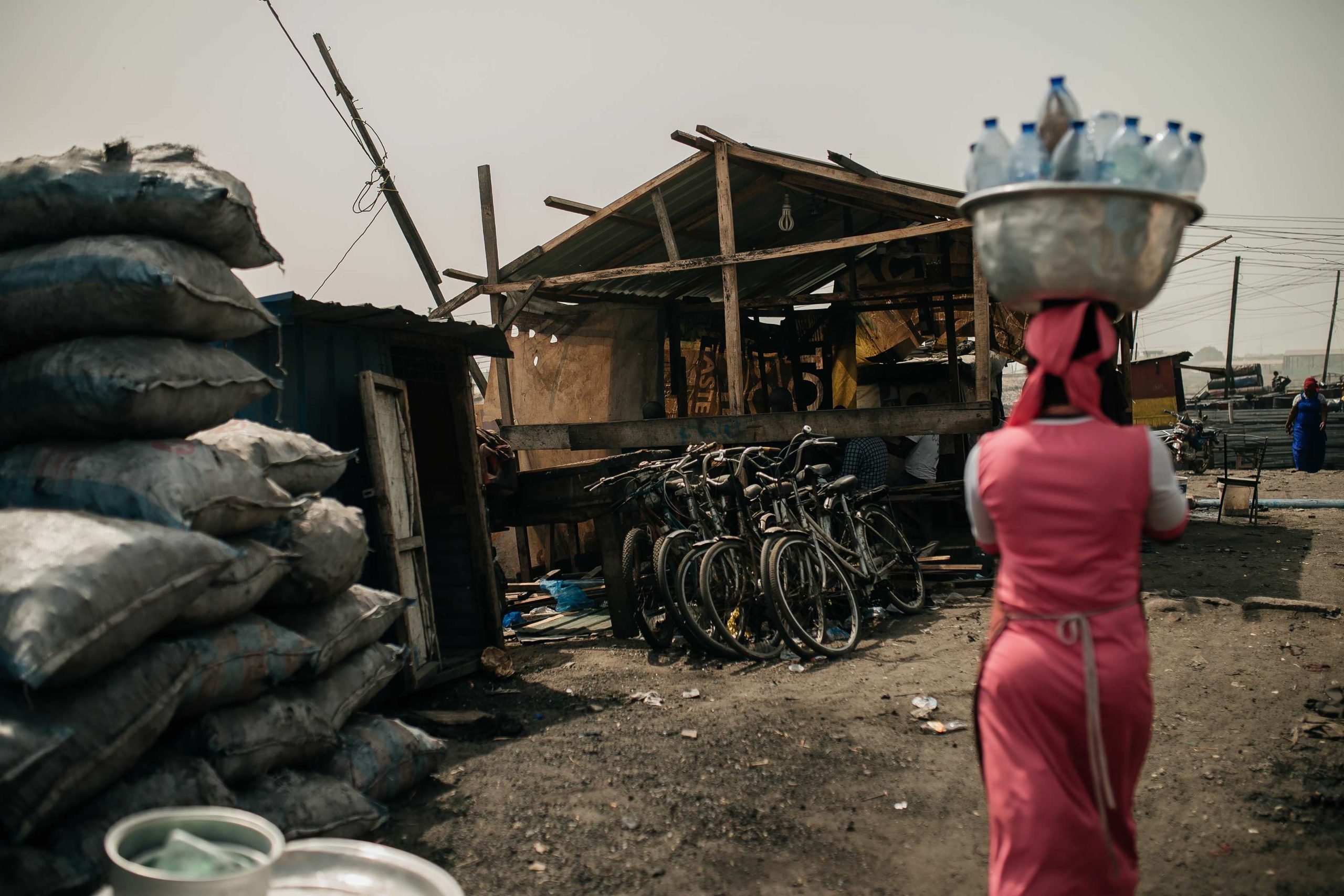
Old Fadam
With globalization, we can be more knowledgeable about what happens in different countries and cultures unfamiliar to us, but of course it is impossible and not practical to know every context. The word salvage is an ugly, lesser-known scar in Philippine history. It has been four decades since martial law but still people go missing, people are found slaughtered, and the president is seemingly ordering the violence. Some people wish to alter facts and paint a deceptive picture over the bloody past. The president of the Philippines has even chosen to bury Ferdinand Marcos, the former dictator who ordered martial law, in the Heroes’ Cemetery, the burial ground for national heroes and patriots in the Philippines.
In the face of attempts to whitewash history, I hope that, as the word salvage remains a mark of historical realities, we continue to share the correct context of the term’s origins while we remember and shed light on injustices from the past and present, and to defend our future from violent authoritarian rule.
Human Rights Watch. “World Report 2021: Philippines.” Human Rights Watch, 2021, https://www.hrw.org/world-report/2021/country-chapters/philippines#.
“Journalist shot dead in the Philippines.” International Press Institute, 18 Nov. 2020, https://ipi.media/journalist-shot-dead-in-the-philippines-3/.
McKirdy, Euan, et. al. “Former Philippines dictator Ferdinand Marcos buried in Heroes’ cemetery.” CNN, 18 Nov. 2016, https://edition.cnn.com/2016/11/17/asia/philippines-marcos-burial-heroes-cemetery/index.html.
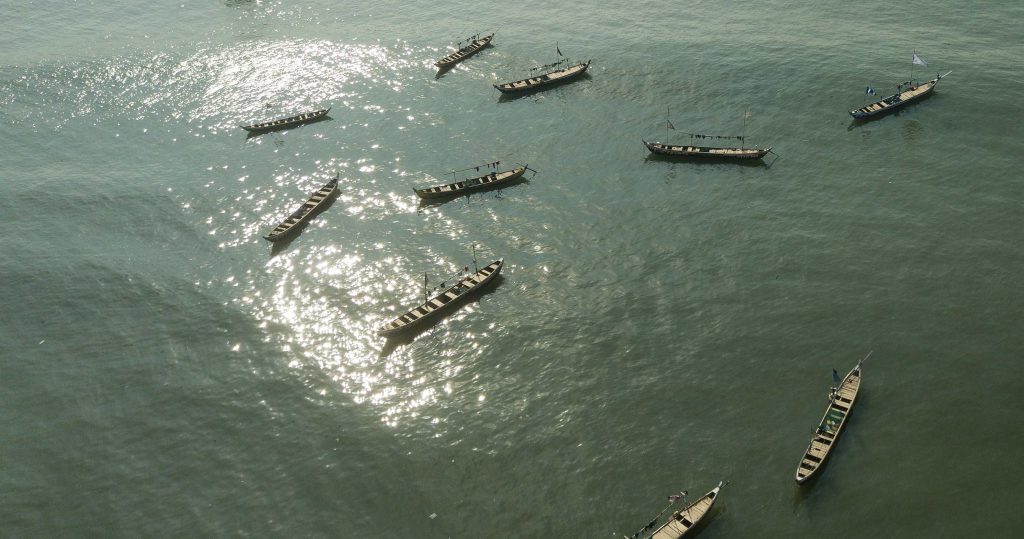
IF THE SEA HAD A PARKING LOT
Since time immemorial, fisherfolk locations in JamesTown, a suburb of Accra, have docked their canoes about three hundred meters away from shore. This is very predominant during the fishing seasons, when fisherfolk can spend days and nights at sea fishing. They anchor the canoes with heavy metals and/or bags of stone and pack food and heavy blankets to withstand the cold at night. Armed with fishing lights and strong nets, they never fail to come back to land without a canoe full of fish.
DEAD WHITE MEN’S CLOTHES
For more than thirty years now, the trading in Accra’s Kantamanto Market has contributed and linked into the urban center’s economic productivity and vibrancy. There are over thirty thousand traders in the market selling all kinds of wares, from used clothing to food to spare car parts. It is the largest second-hand clothing market in West Africa. Most of these second-hand clothes are brought in from the USA, Canada, and Europe. They come packed in bales and are purchased by wholesalers (as seen in the photo) and are later bought by retailers and eventually purchased by the end user. The main concern about these used clothes is that they are usually of low quality due to the fast fashion culture of the West. Thus, when these bails are opened up, 60% of the clothing in them are worn out, forcing the retailers to throw them away, and this is resulting in a major waste problem in Ghana.
OLD FADAM
Fadama is an informal settlement in Accra and is Accra’s biggest slum. It has been nicknamed “Sodom and Gomorrah.” The government of Ghana has tried on several occasions to evict the residents of the slum, but the evictees always seem to come back because the government doesn’t provide alternate housing for the people who stay there. A major problem that slums in Ghana face is the lack of adequate sanitation. Many people who live in slums do not have a bathroom in their place of residence, so they often depend on using public bathrooms and water ways. The lack of adequate sanitation increases the risk of getting diarrhea and diseases like cholera. Regardless of hazardous conditions present there, the residents of the slum have still found a way to create businesses and livelihoods there and live at their own pace.
– Nana Kwadwo Agyei Addo
JOAQUIN ROSALES writer
Joaquin Rosales is a freelance writer and journalist living in Asia. They also draw and illustrate on their free time.
NANA KWADWO AGYEI ADDO photographer
Nana Kwadwo Agyei Addo is a twenty-three year old Ghanaian photographer and artist. Born and raised in Ghana, he focuses his work on matters relating to social change and the appreciation of the Ghanaian reality and hopes to change the view and narrative of Ghana and its people through his photos. His work is often described as poetic and leaves the viewer with lots of questions and thoughts.
© Copyright for all texts published in Stillpoint Magazine are held by the authors thereof, and for all visual artworks by the visual artists thereof, effective from the year of publication. Stillpoint Magazine holds copyright to all additional images, branding, design and supplementary texts across stillpointmag.org as well as in additional social media profiles, digital platforms and print materials. All rights reserved.
